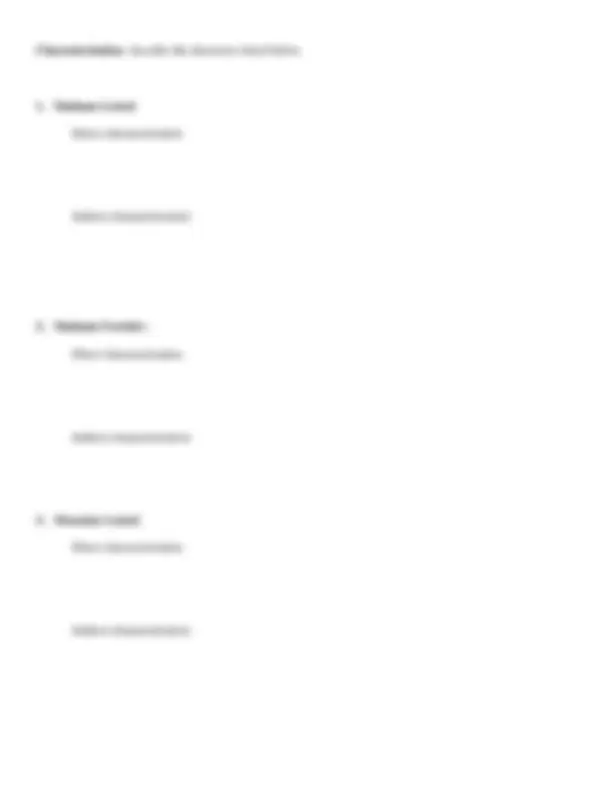



Study with the several resources on Docsity

Earn points by helping other students or get them with a premium plan


Prepare for your exams
Study with the several resources on Docsity

Earn points to download
Earn points by helping other students or get them with a premium plan
Community
Ask the community for help and clear up your study doubts
Discover the best universities in your country according to Docsity users
Free resources
Download our free guides on studying techniques, anxiety management strategies, and thesis advice from Docsity tutors
An in-depth exploration of characterization, a literary device used to develop and introduce characters in literature. The various stages of characterization, the history of the term, and the two main types: direct and indirect. Examples of characterization are provided for madame loisel, madame forstier, and monsieur loisel.
What you will learn
Typology: Exams
1 / 2

This page cannot be seen from the preview
Don't miss anything!


Characterization is a literary device that is used step-by-step in literature to highlight and explain the details about a character in a story. It is in the initial stage in which the writer introduces the character with noticeable emergence. After introducing the character, the writer often talks about his behavior; then, as the story progresses, the thought-processes of the character. The next stage involves the character expressing his opinions and ideas, and getting into conversations with the rest of the characters. The final part shows how others in the story respond to the character’s personality. Characterization as a literary tool was coined in the mid 15th century. Aristotle in his Poetics argued that “tragedy is a representation, not of men, but of action and life.” Thus the assertion of the dominance of plot over characters, termed “plot-driven narrative,” is unmistakable. This point of view was later abandoned by many because, in the 19th century, the dominance of character over plot became clear through petty bourgeois novels.
An author can use two approaches to deliver information about a character and build an image of it. These two types of characterization include:
Characterization : describe the characters listed below.
1. Madame Loisel: Direct characterization: Indirect characterization: 2. Madame Forstier: Direct characterization: Indirect characterization: 3. Monsieur Loisel: Direct characterization: Indirect characterization: